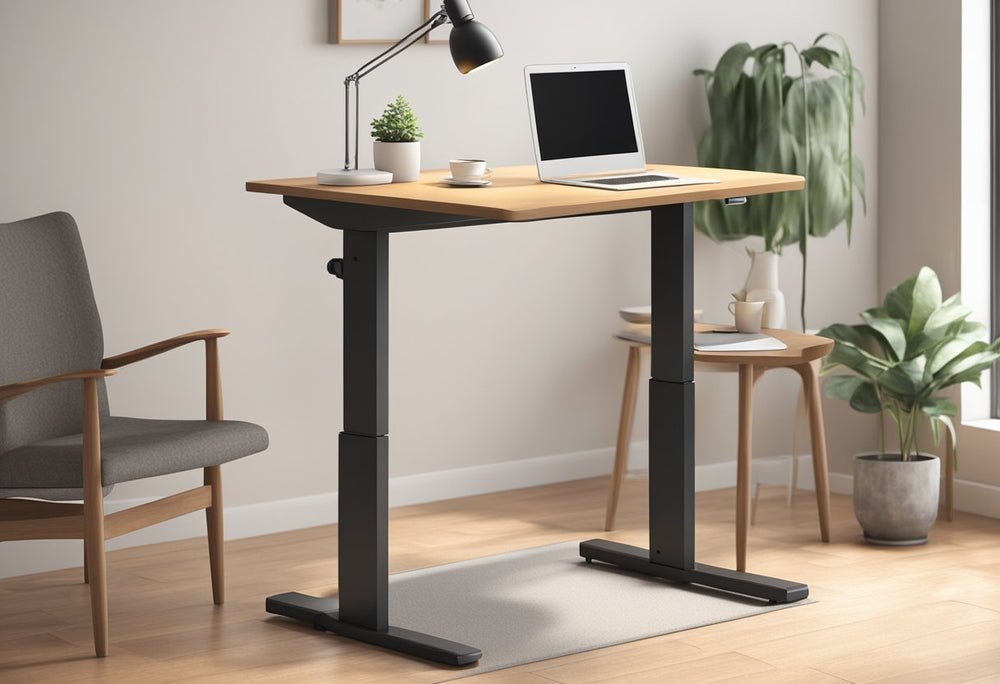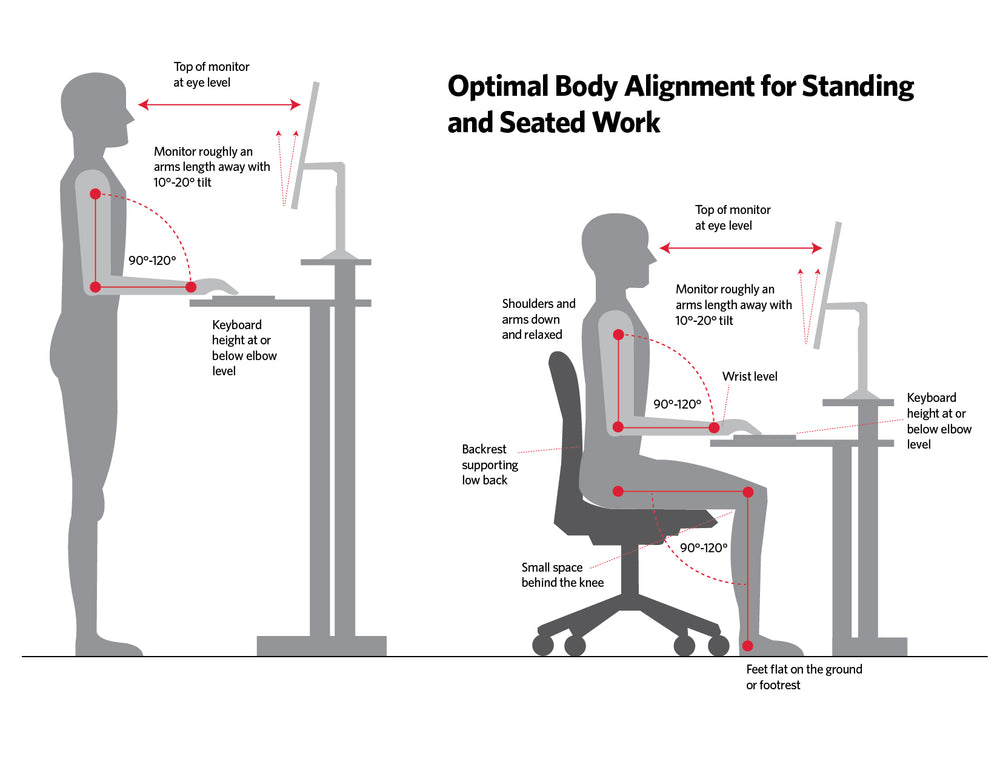Date: November 15, 2022
Are you working all day at your desk, hunched over your computer? The studies are clear: sitting all day at work can cause your body to experience:
Over the past decade the work environment has been going through a monumental shift toward standing desks, or stand-up desks.
In this article I will cover the Health Benefits of a Standing Desk. The data to support this article comes from a variety of sources listed at the bottom of this article. As always, do your own research.
Table of Contents
- Health Benefits of a Standing Desk
- 1 - Standing Desks May Help Burn More Calories
- 2 - Lower Blood Sugar Levels
- 3 - Lower Risk of Heart Disease
- 4 - Reduced Risk of Cancer
- 5 - Standing Desks May Be Good for Your Back
- 6 - Increased Energy Levels
- 7 - Standing Desks May Increase Productivity
- CONCLUSION: Health Benefits of a Standing Desk
- Reference List
Health Benefits of a Standing Desk
There are many health benefits to be drawn from standing desks, but the most important are as follows:
1. Standing Desks May Help Burn More Calories
Studies have shown that using a standing desk for 3 hours per day can burn as much as 174 more calories than sitting down. That’s over 850 extra calories burned every week and over 40,000 calories per year!
40,000 calories is equal to TWELVE POUNDS of body weight per year!

2. Lower Blood Sugar Levels
In the same study, it was found that standing for 3 hours after lunch reduced the after-meal blood sugar spike by 43% compared to groups who sat.
Both groups—the "standers" and the "sitters":
- Did the same amount of exercise
- Ate the same foods
- Did the same movement around the office.
The study showed that prolonged sedentary time is linked to a 112% greater risk in Type 2 Diabetes.

3. Lower Risk of Heart Disease
Sitting is so harmful for your heart that an hour of intense exercise does not make up for an entire day of sitting in your office.
18 studies of over 800,000 participants have confirmed that prolonged sedentary time has been calculated to increase the risk of heart disease by a whopping 147% compared to an active lifestyle.
4. Reduced Risk of Cancer
According to the American Cancer Society:
“Sitting time research is still in its infancy, and we are trying to understand whether it’s the total amount that you sit or how frequently you break up those bouts of sitting that are related to disease risk.
While we continue to learn what is driving this relationship, it’s clear that cutting down on the time you spend sitting is good for your health.”
5. Standing Desks May Be Good for Your Back
Of course, there are musculoskeletal benefits as well from standing more. Back pain is one of the most common complaints of office workers, or even people who spend too much time on their couch at home.
A recent study compared the impact of standing desks vs. sitting desks and found that breaking up workplace sitting time with intermittent standing bouts improves fatigue and musculoskeletal discomfort in overweight/obese office workers. In this study they found that lower back musculoskeletal discomfort was reduced by 32% when you stand every 30 min using an electric, height-adjustable workstation.
Another study by the Center for Disease Control found that upper back and neck pain reduced by 54% after four weeks of standing.
6. Increased Energy Levels
In one seven-week study, those using standing desks reported 87% more vigor and energy during the day compared to those at sitting desks. There are related findings showing that sedentary time increased the risk of both depression and anxiety.
7. Standing Desks May Increase Productivity
In a study from 2016, it was found that call center workers were 50% more productive than their sitting counterparts. Users of standing desks were more productive on a daily basis compared to their seated counterparts and it was found that productivity of the desk riser users significantly increased over time, from ∼23% in the 1st month to ∼53% over the next 6 months. Finally, this productivity increase was similar for employees across both job categories.
CONCLUSION - Health Benefits of a Standing Desk
It’s hard to argue with the numbers and studies. Standing desks are a huge benefit to those who use them, so it’s no surprise that many workplaces are switching over to manual standing desks, electric standing desks, and full standing desks.
REFERENCE LIST
Here's a list of references included in the article above:
Buckley JP1, Mellor DD, Morris M, Joseph F. - Standing-based office work shows encouraging signs of attenuating post-prandial glycaemic excursion. Occup Environ Med. 2014 Feb;71(2):109-11
Wilmot EG1, Edwardson CL, Achana FA, Davies MJ, Gorely T, Gray LJ, Khunti K, Yates T, Biddle SJ. - Sedentary time in adults and the association with diabetes, cardiovascular disease and death: systematic review and meta-analysis. Diabetologia. 2012 Nov;55(11):2895-905
Eric J. Shiroma and I-Min Lee - Physical Activity and Cardiovascular Health; Lessons Learned From Epidemiological Studies Across Age, Gender, and Race/Ethnicity. Circulation. 2010;122:743–752
Thorp AA1, Kingwell BA2, Owen N3, Dunstan DW4. - Breaking up workplace sitting time with intermittent standing bouts improves fatigue and musculoskeletal discomfort in overweight/obese office workers. Occup Environ Med. 2014 Nov;71(11):765-71
Pronk NP1, Katz AS, Lowry M, Payfer JR. - Reducing occupational sitting time and improving worker health: the Take-a-Stand Project, 2011. Prev Chronic Dis. 2012;9:E154








